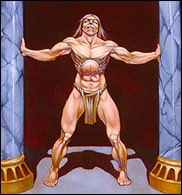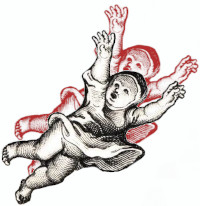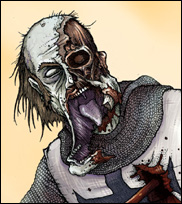Taken from The French Quarter: An Informal History of the New Orleans Underworld by Herbert Asbury, 1936, NY, Perseus, 462 pages
The gathering of “immigrants” or “settlers” for Plantation Louisiana was conducted in various ways, and most infamously, beginning in 1718, according to schemes of a Scottish adventurer named John Law, who would talk his French investors into a very English style of staffing:
Quoting from Albert Phelps [Asbury’s key source for the period, who wrote in 1905]
“…ransacking the jails and hospitals. Disorderly soldiers [already slaves], black sheep of distinguished families, paupers, prostitutes, political suspects, friendless strangers, unsophisticated peasants straying into Paris, all were kidnapped, herded, and shipped under guard to fill the emptiness of Louisiana… To produce the human food required of the hungry octopus , the agents of the police scoured the kennels and alleys of Paris, and many shipload of wretchedness was sent to the wilderness as a sacrifice to the new god.”
That god being greed, of course.
Vagabonds were, according to law not permitted to be shipped, but they were the very prime target of the enterprise which was conducted as a lie on its face. At every phase, in the sphere of every nation who enslaved men in Plantation America, the ruling class erected statutes of law against the very abuses—such as kidnapping children—that they paid gangs of bullies to conduct on their behalf and the fool academics of the future would one day believe as holy writ the phony laws that unlettered slave boys knew for the farce that they were.
We are then told that soldiers were freely enlisted men who served for love of country.
So let us go deeper into history for quotes from men from the very time and place where the soldiers were sent, many of whom starved, some of whom ran away and most of whom depended on Indian charity for food and were hence no very eager combatants against their main foe.
First, it should be said, that a soldier did have one pleasure. When “corrections girls” abducted women of the lower class sent over to be retrained by nuns, and then married to land owners, misbehaved, they were set on a wooden horse in the parade ground and the soldiers got to beat them with various implements that would not break bones. Also, many of the POWs sold as sailors and soldiers managed to run off with supplies, which was a good fortune, as many of the soldiers were not issued clothes or shoes.
In 1736, on the eve of his disastrous war with the Chickasaws, Governor Bienville had this to say about the quality of the soldiers shipped to him:
“There are but one or two among them whose size is above five feet, and as to the rest, they are under four feet and ten inches. [1] With regard to their moral character, it is sufficient to state that, out of fifty-two who have lately been sent here, more than one-half have already been whipped for larceny. In a word, these useless beings are not worth the food bestowed upon them; they are burdens to the colony, and from them no efficient military service is to be expected.”
We have above, a rare physical and behavioral description of the kind of person who was shipped from the gutters of European cities to work the lands of the New World and sail its ships and fight its wars, malnourished orphans who only survived in the main long enough to be sold as a slave or dressed up as a soldier, whipped and marched around and shot, because they stole food as children.
Yet, even these wretched being might be driven to revolt. Once such malnourished and ruined young men, generally of about 18 years, had been so thoroughly beaten down by the military, corrections and labor systems, the Indians did not want them. They took women and children but killed men they deemed useless as warriors.
According to Asbury these soldiers were officered by men, “who treated them as slaves and who put personal gain above every consideration of honor and country.”
Mutinies became so common that they were put down with increasing severity, culminating in the mutiny of Cat Island, now called Ship Island in the Gulf of Mexico in 1754.
Note that the conditions that these armed soldiers were held in by a single officer are considered by modern historians par for the course, but that unarmed laborers might be treated in the exact same way by an armed owner is considered beyond the pale, like some breach of mythical racial identity.
This detachment of men were under the command of a certain Duroux, who took all their food and sold it, forcing them to scavenge for survival. They worked as lime making slaves instead of patrolling, with Duroux selling the produce of their work in other words, operating a classic plantation. He had a few large bullies who enforced his orders with the only firearms not locked down upon the runt laborers, exactly as coal mines would be run 150 years later in Appalachia. Beatings, torture, mutilation and even being broiled in the sun naked while eaten by insects were all common punishments. Some of the men escaped and went to New Orleans and told Governor Kerlerec, who shipped them back to be mutilated and tortured.
The men rose in revolt and threw Duroux’s body in the river and fled across country with a band of English traders to Georgia. Unfortunately, the slave catcher who could not be evaded was on their trails, a war party of Choctaw warriors, and they were taken back to New Orleans to face their grisly punishments, including one of the men being nailed into a coffin which was then sawed in half.
Note that the French like the Spanish were very honest in recording the punishments meted out to their suffering slaves. But the English operated under an intrinsically disingenuous system of exploitation which claimed goodwill on behalf of the master class and assured emancipation on behalf of the slave class, neither of which were ever usual and normal conditions in Plantation America, with the slaves of every race horribly mistreated by the masters of every race and rising in revolt hundreds of times and always, always, going down to terrible defeat, for they fought a worldwide system of oppression.
And yet, the treatment was so terrible and so lethal, that they would always rise again, would always runaway again, until eventually a tide of free-seeking Americans would defeat the Indian allies of the British and Later American military machines and make a temporary place of freedom, until Civilization caught up with them again.
Notes
-1. The average size of men in this era was around 5’ 5” for malnourished European soldiers, 5’ 8” and up for well-fed aristocrats, 5’ 10” for grenadiers [the biggest low class men] and six feet for Indian warriors.











